Abstract
PURPOSE: This paper reports an outcome study of 52 consecutive children treated by bilateral lateral rectus recession for intermittent exotropia over a 9 year period (1981-90) with a minimum follow up of 6 months. METHODS: Successful alignment was defined as the absence of any postoperative intermittent or constant tropia in any position of gaze. The study examined the variables that might be predictive of successful alignment. The charts were abstracted for age at initial surgery, quantity of initial deviation, initial refraction, motor alignment at 1 week and 6 months, final alignment, secondary surgery results and the incidence of a monofixation syndrome result. RESULTS: Motor tests demonstrated that 32 (62%) of the patients were successfully aligned by the initial procedure performed for a mean of 25 prism diopters of preoperative deviation while viewing distant targets at a mean age of 4 years 8 months, followed for a mean of 4 years, 4 months. The incidence of undercorrections and overcorrections were approximately equal in quantity suggesting that the current surgical dosage was adequate, but the age at initial surgery, initial deviation, initial refraction and 1 week postoperative alignment results were not predictive of success. Alignment at 6 months, however, was highly correlated with successful alignment by the end of the study (p = 0.002). Secondary surgery was performed for 11 patients and 5 patients were found to have a monofixation syndrome result. CONCLUSION: Successful alignment was achieved in the majority of children treated for intermittent exotropia by an initial bilateral lateral rectus recession. However, 20% of the patients received secondary surgery for a residual deviation, and the study confirmed a previously reported 10% incidence of monofixation syndrome result in children surgically treated for this type of strabismus.
Full text
PDF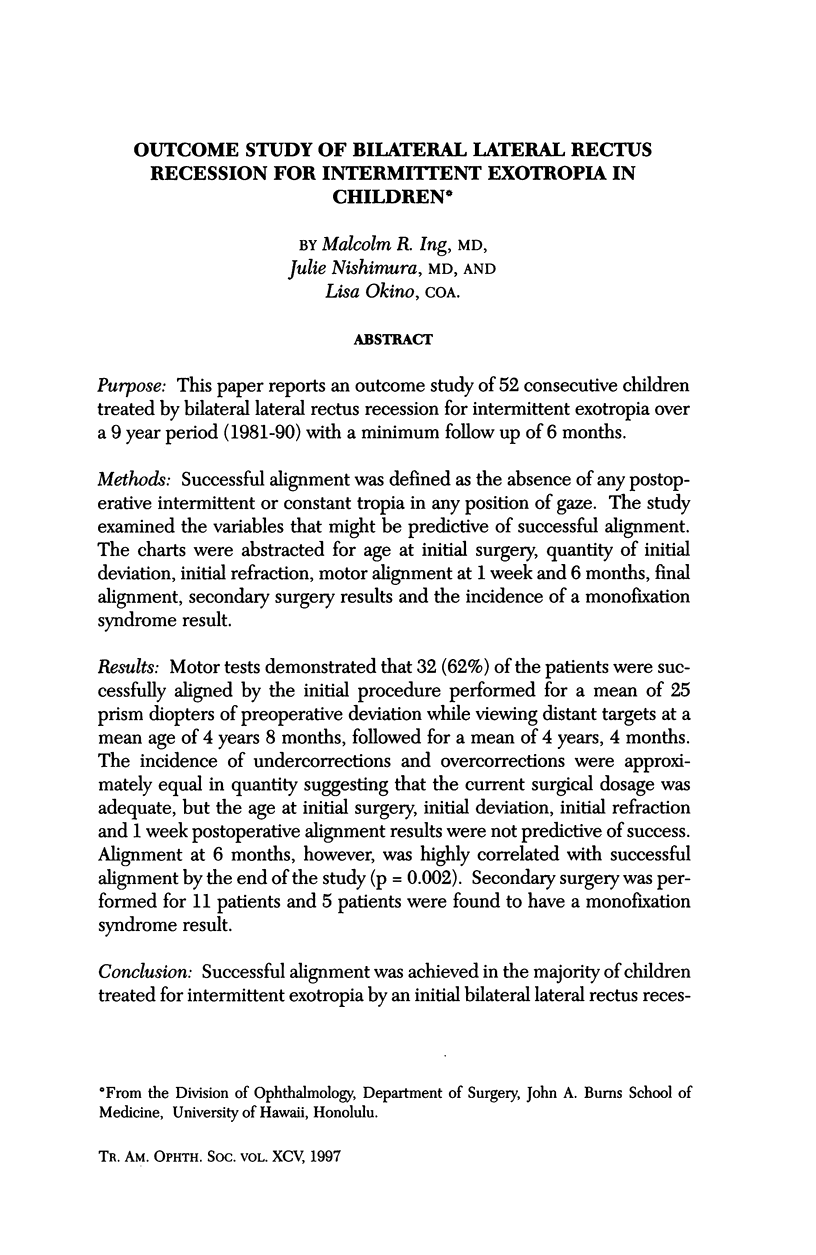
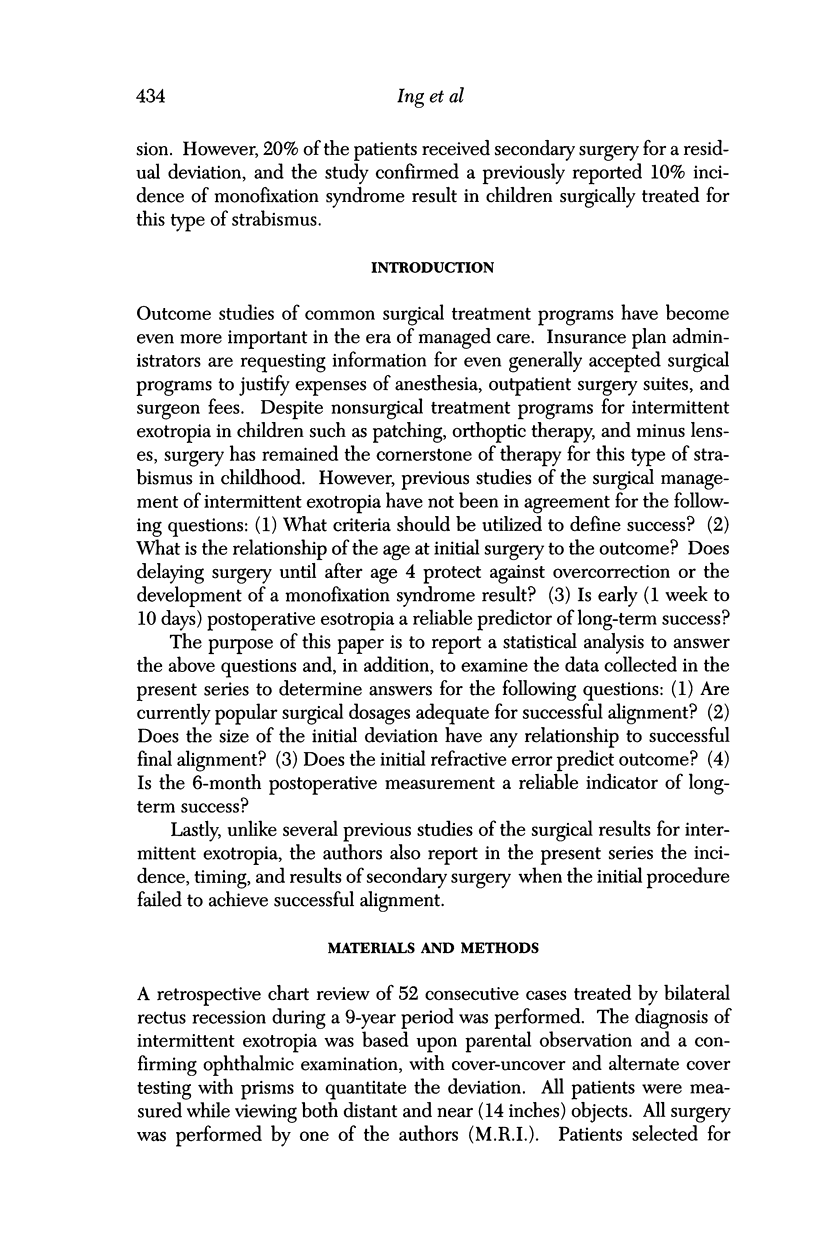
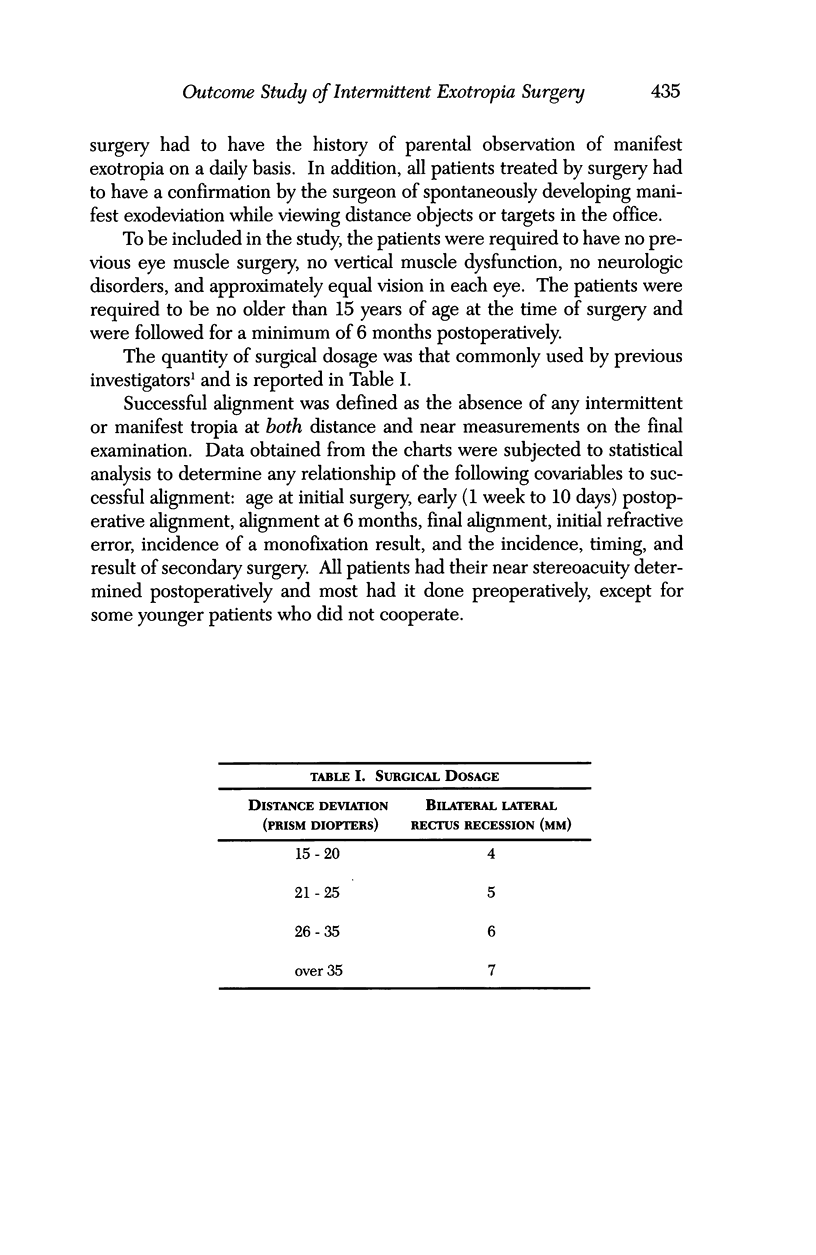
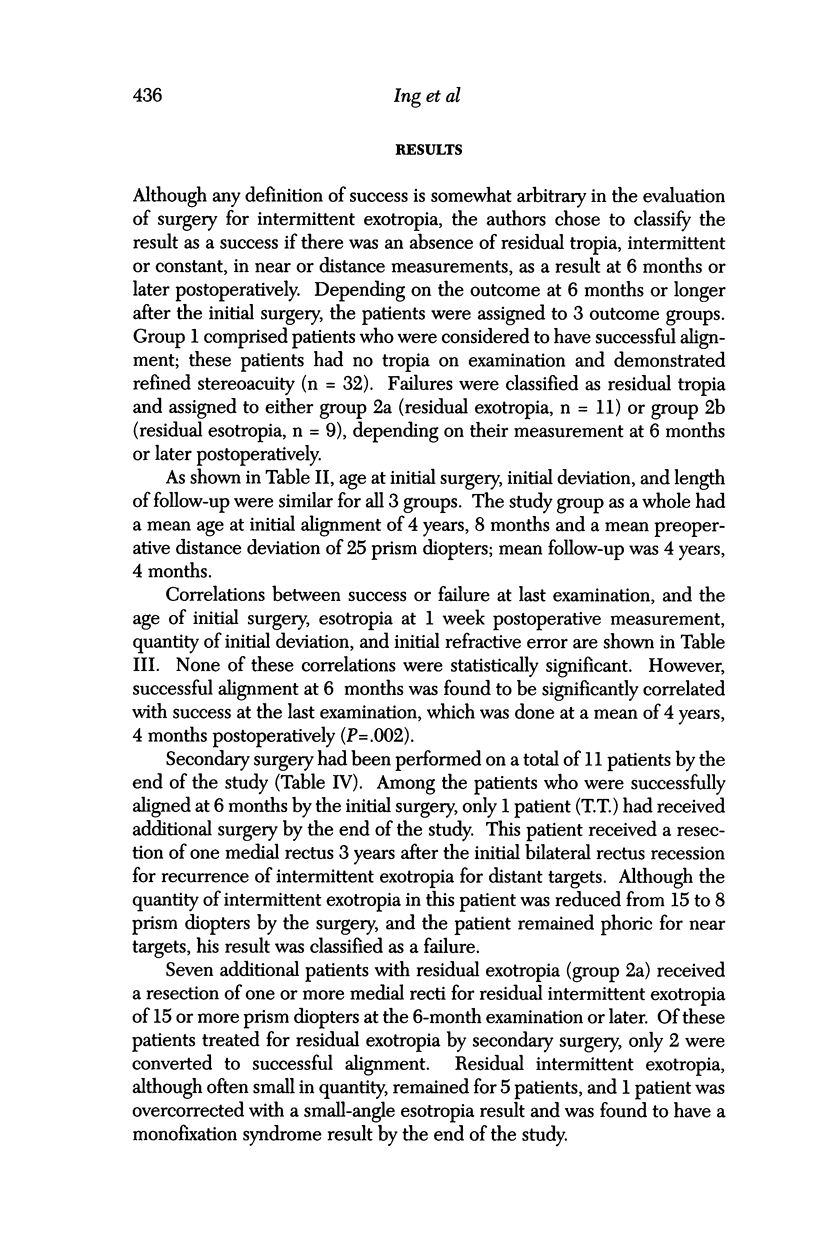
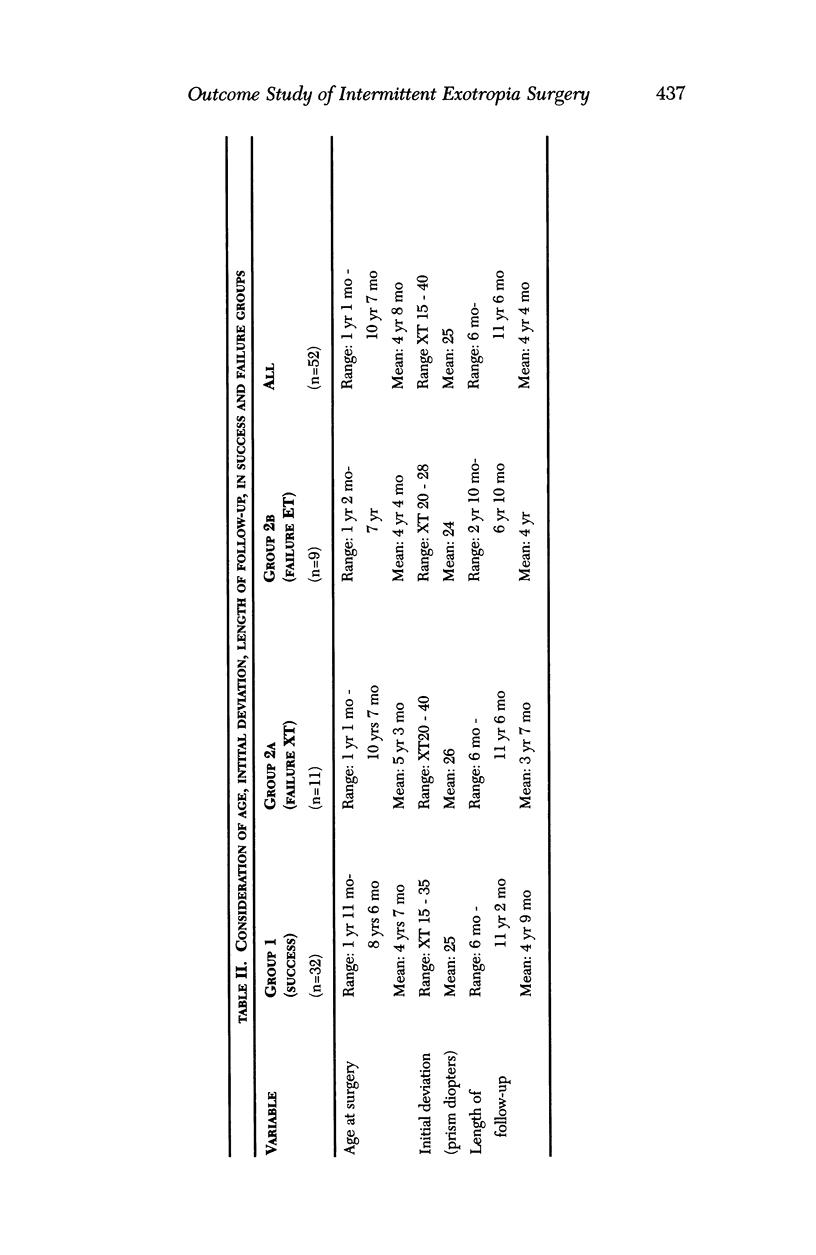
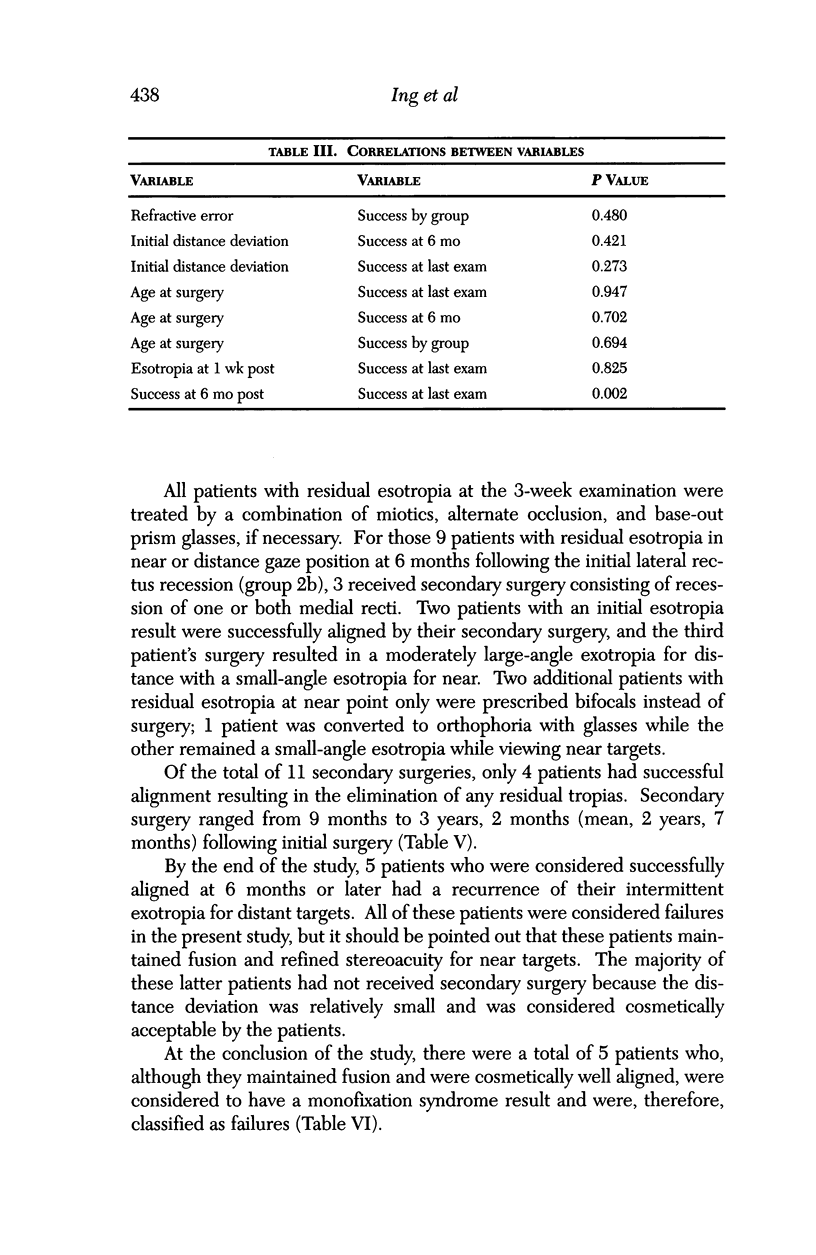
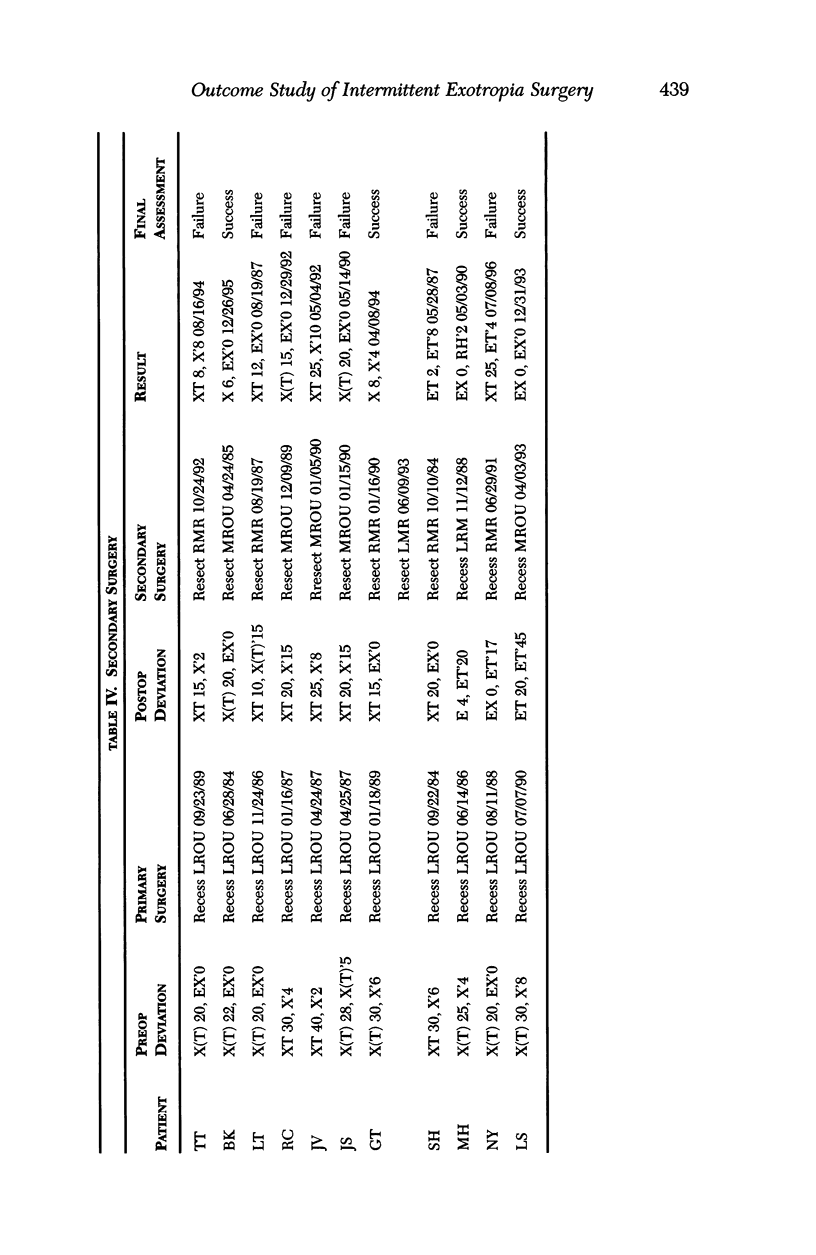
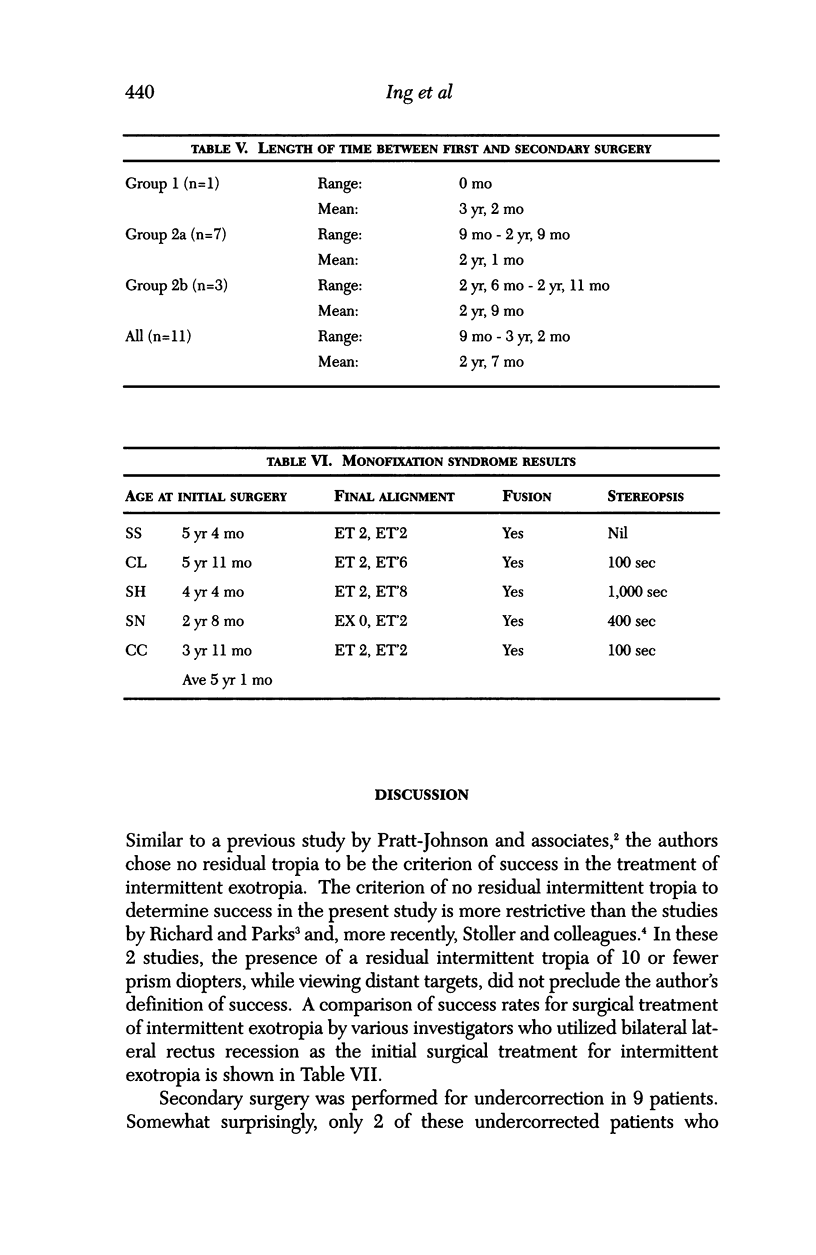
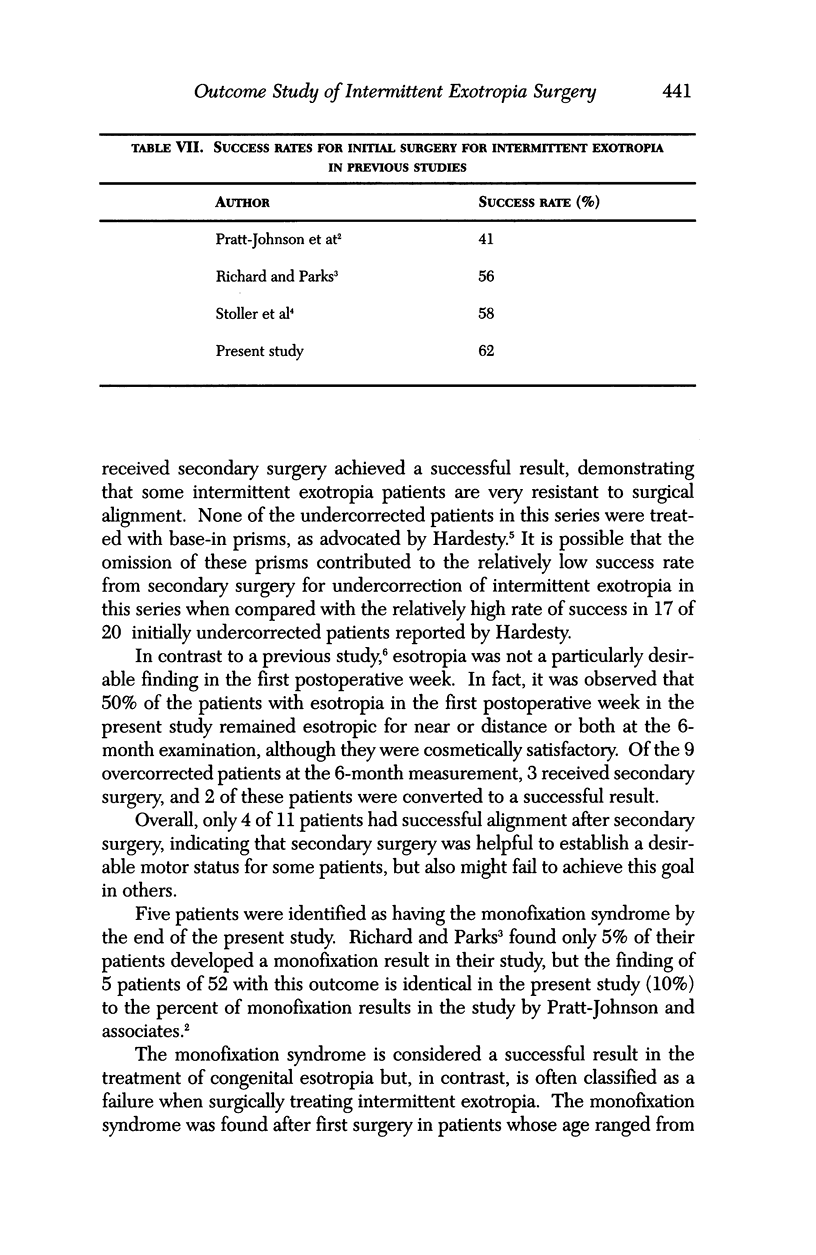
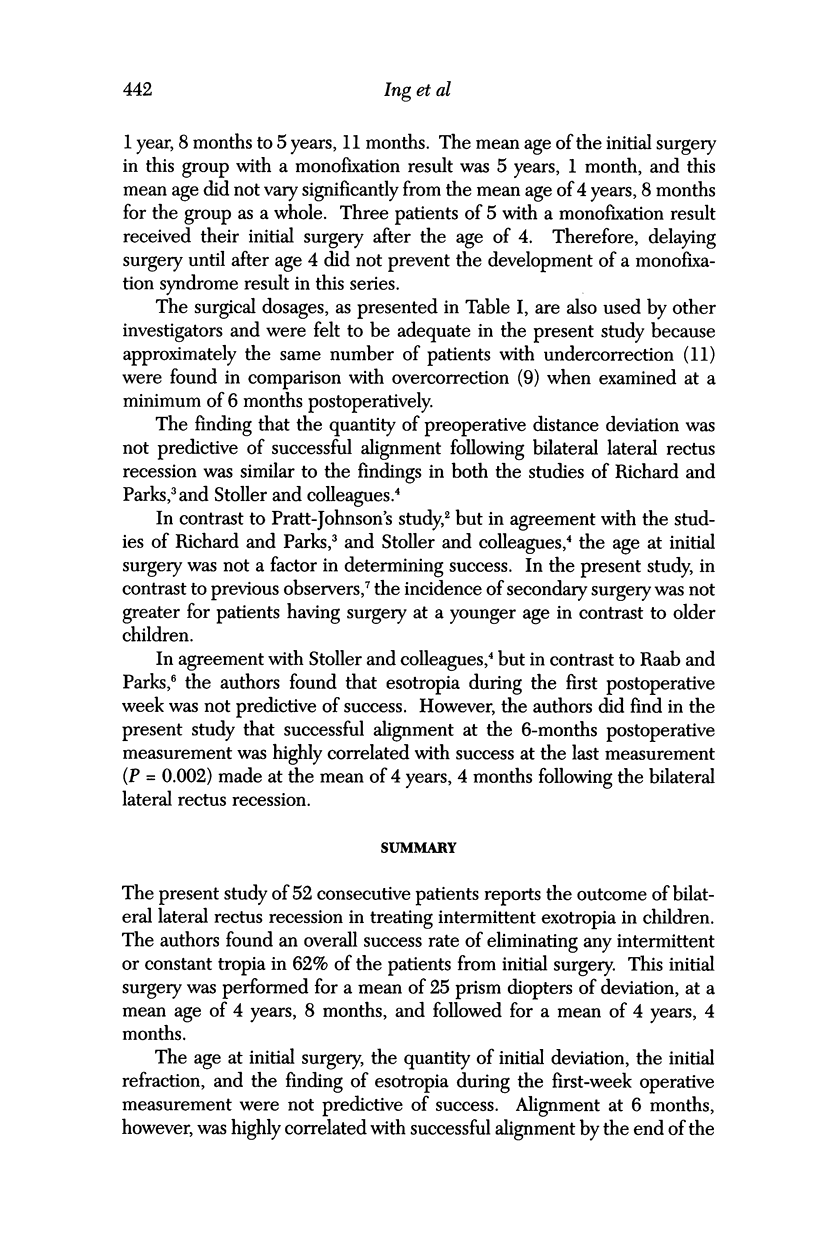
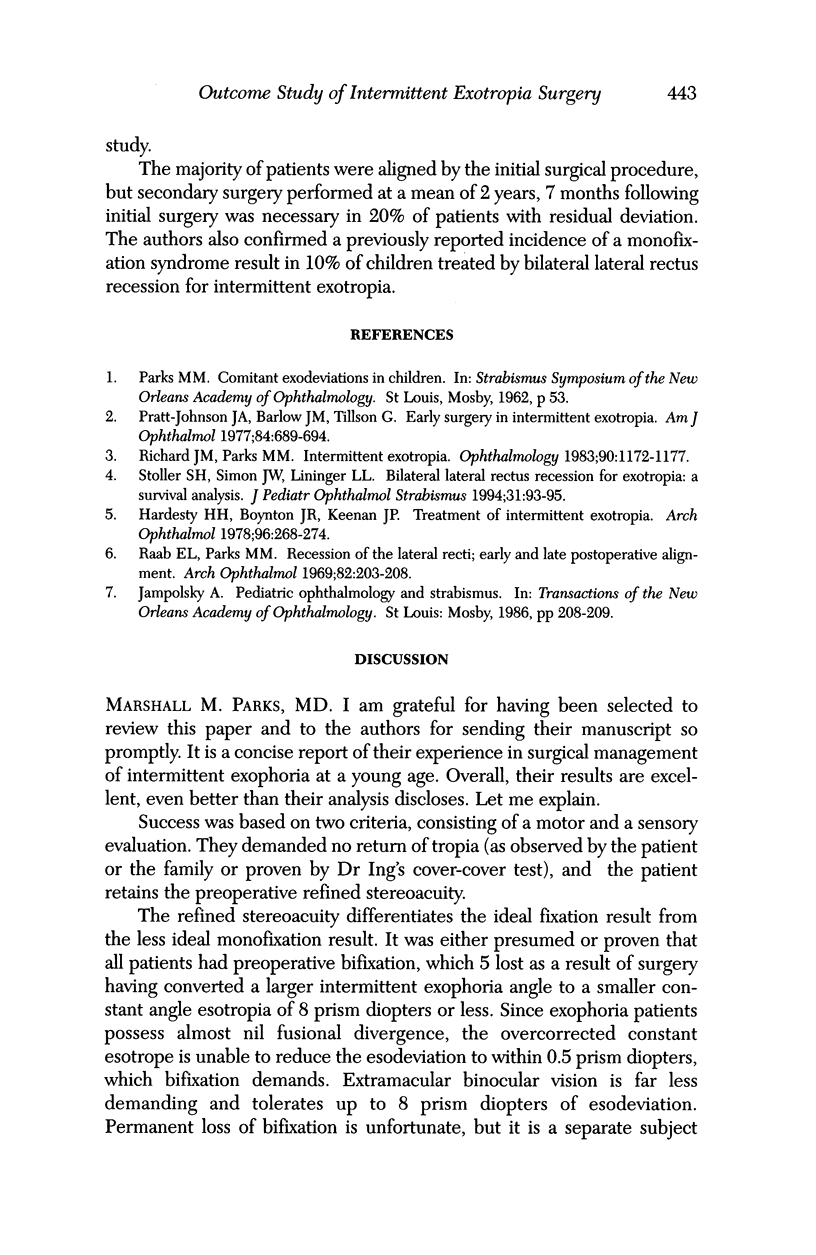
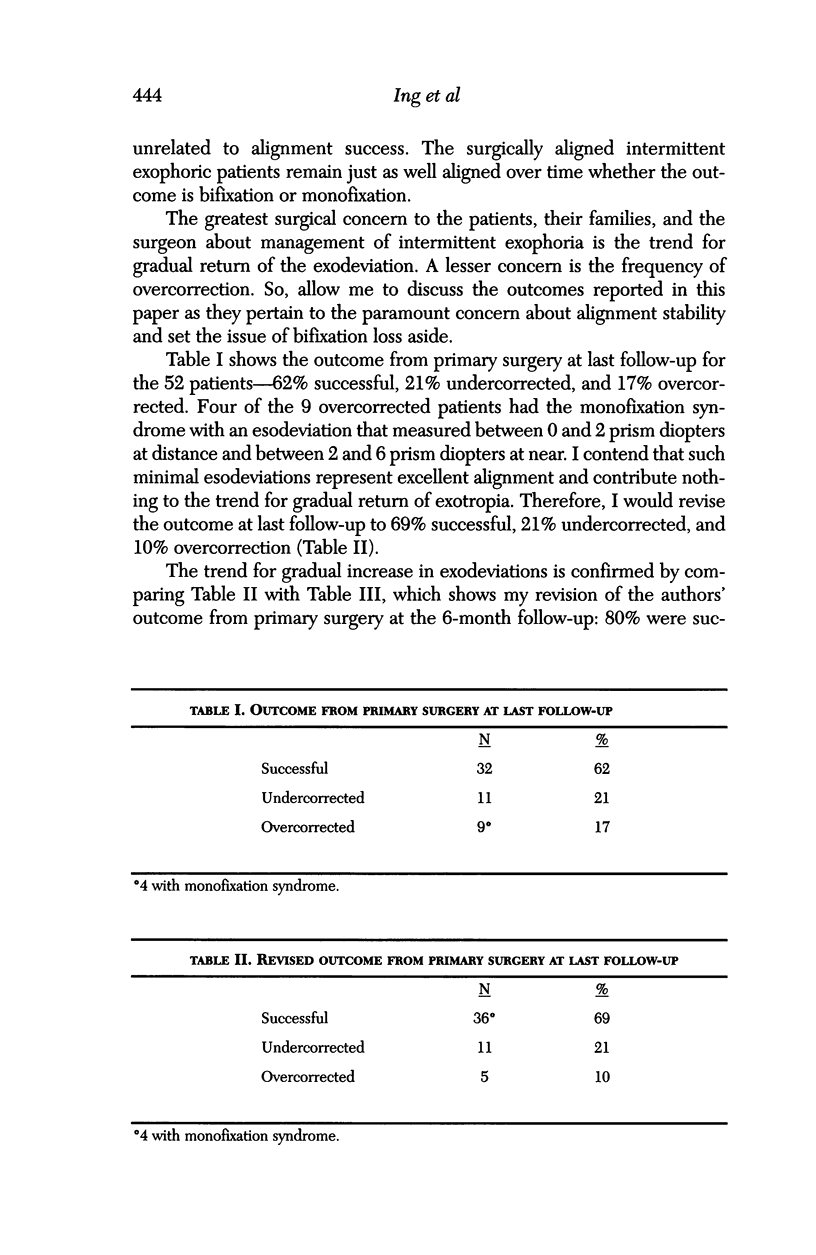
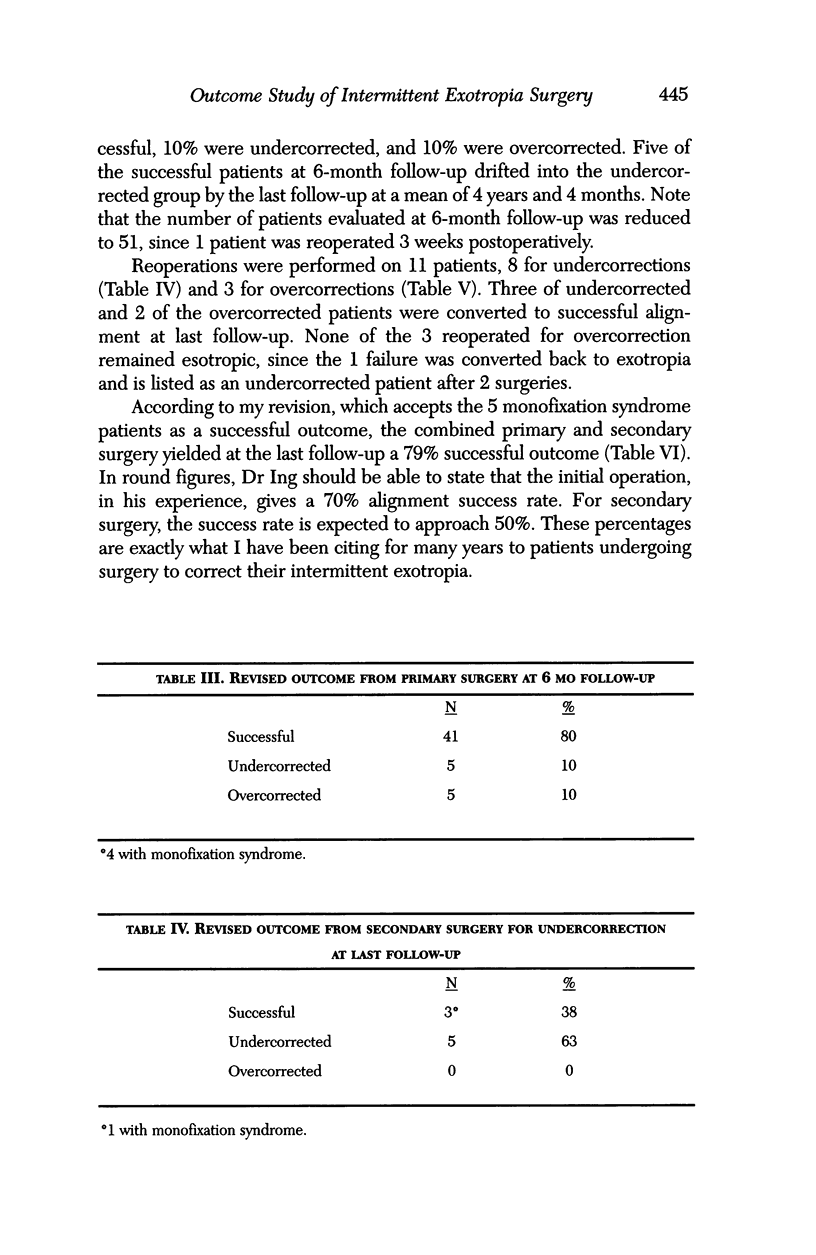
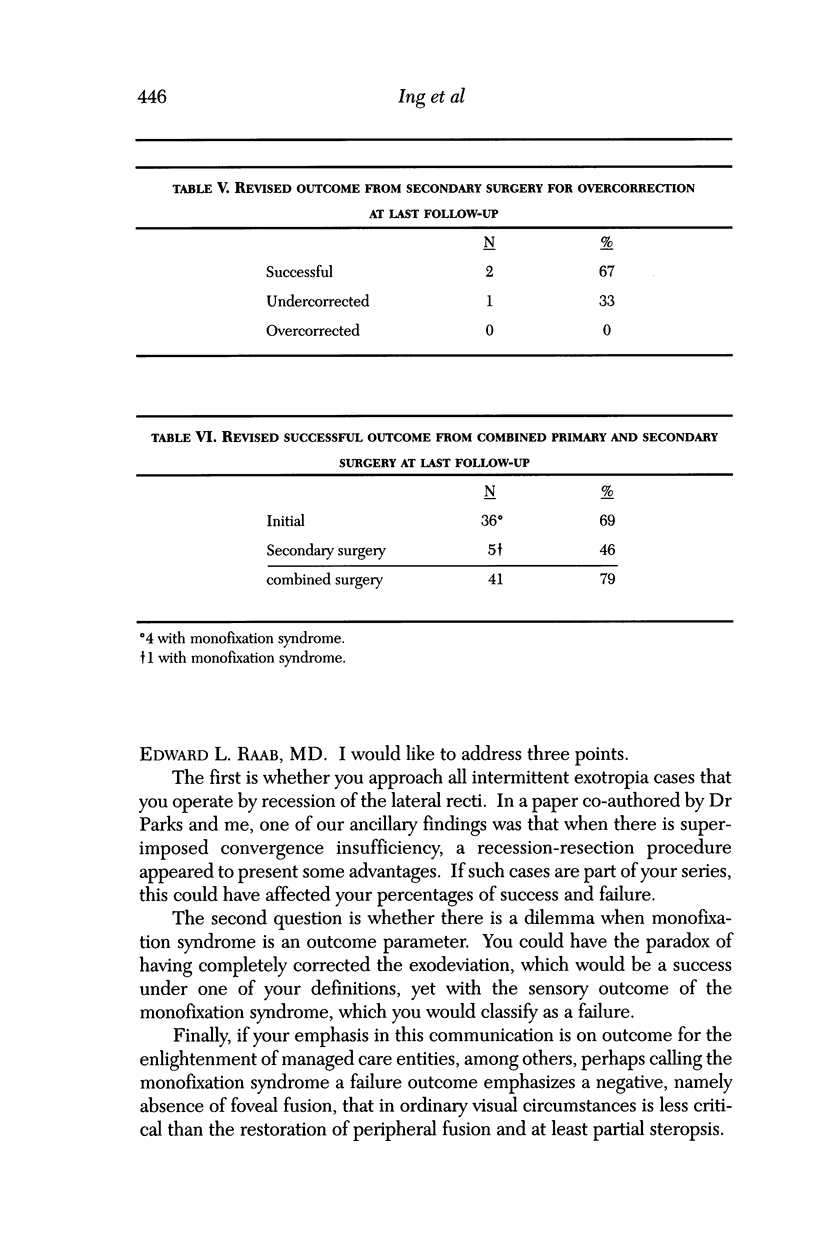
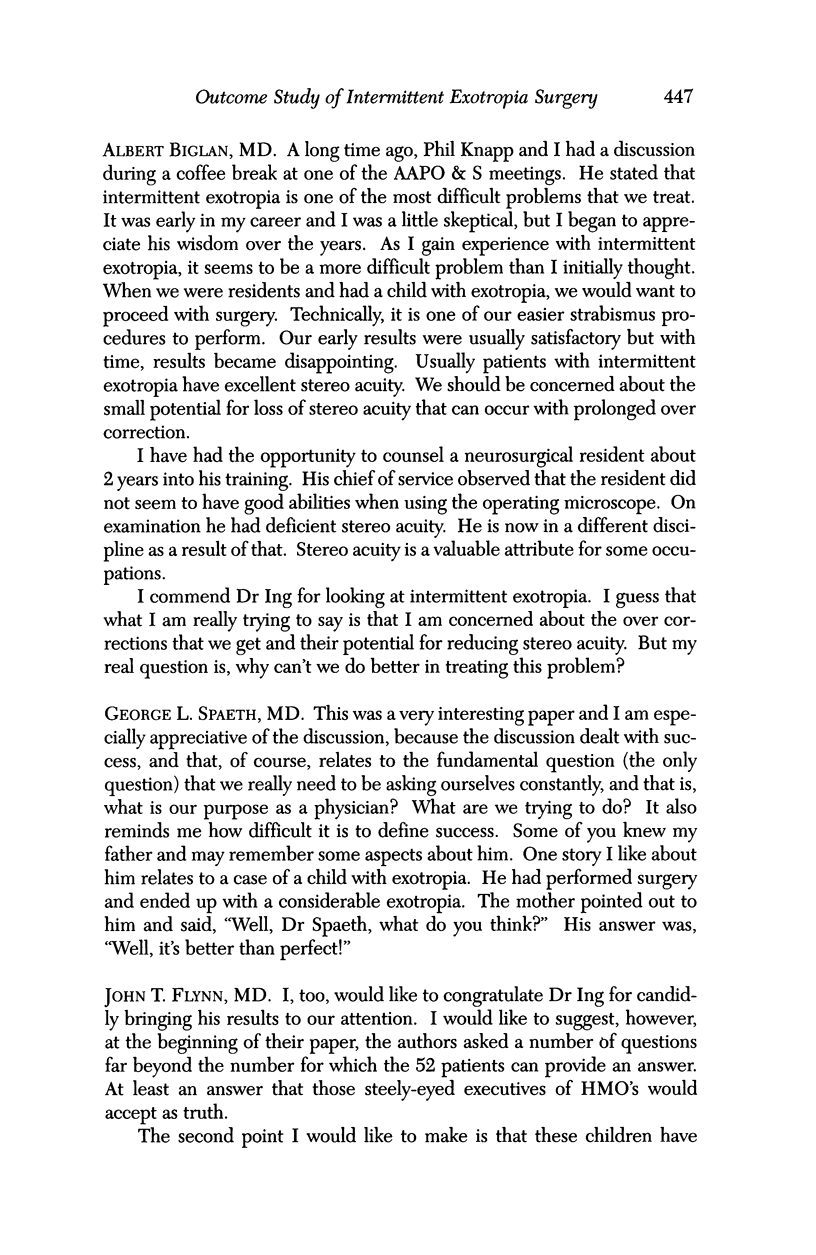
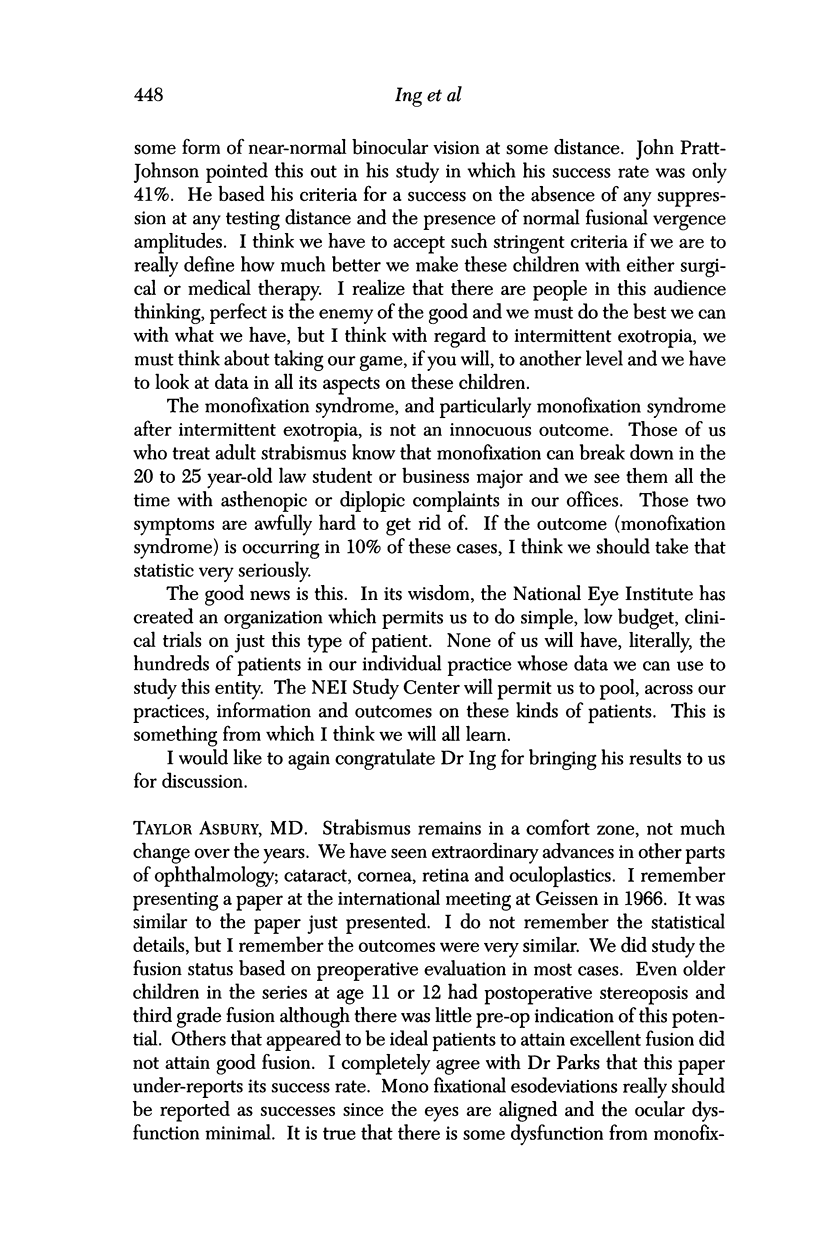
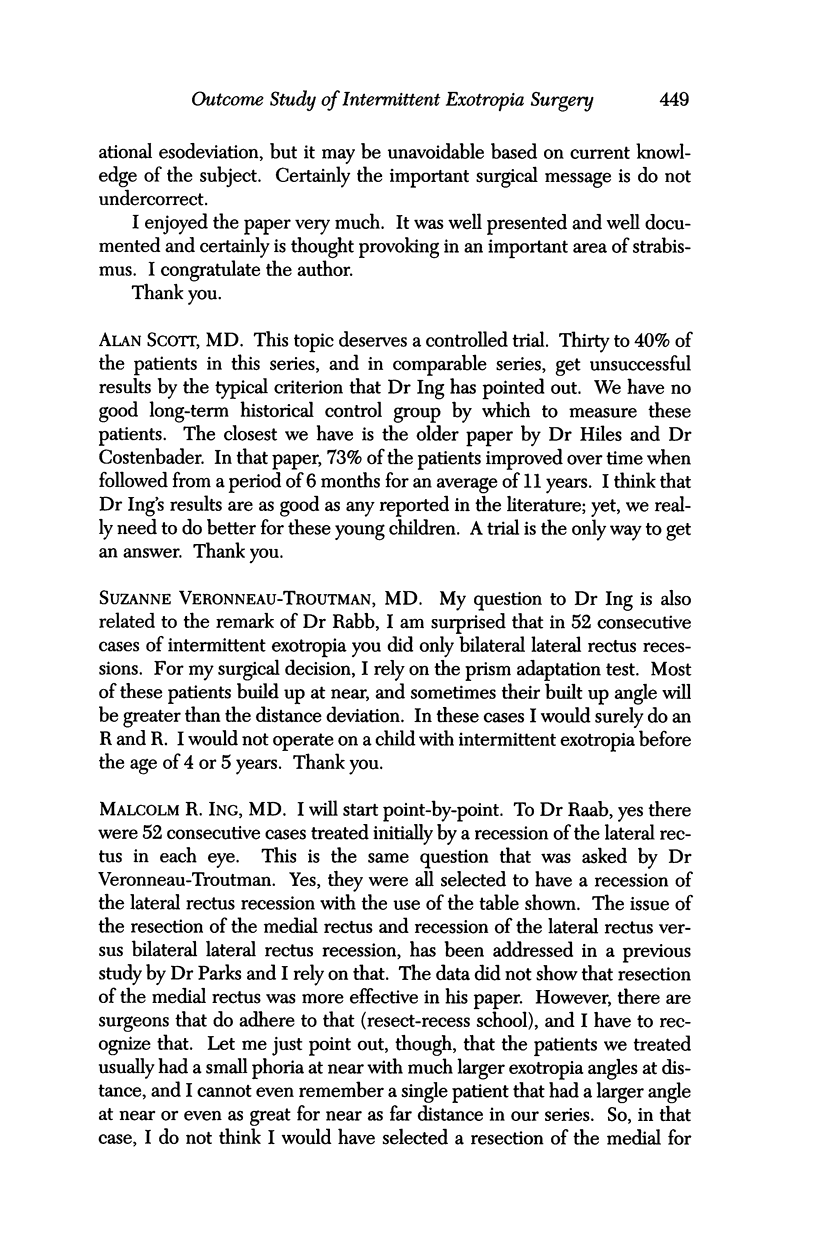
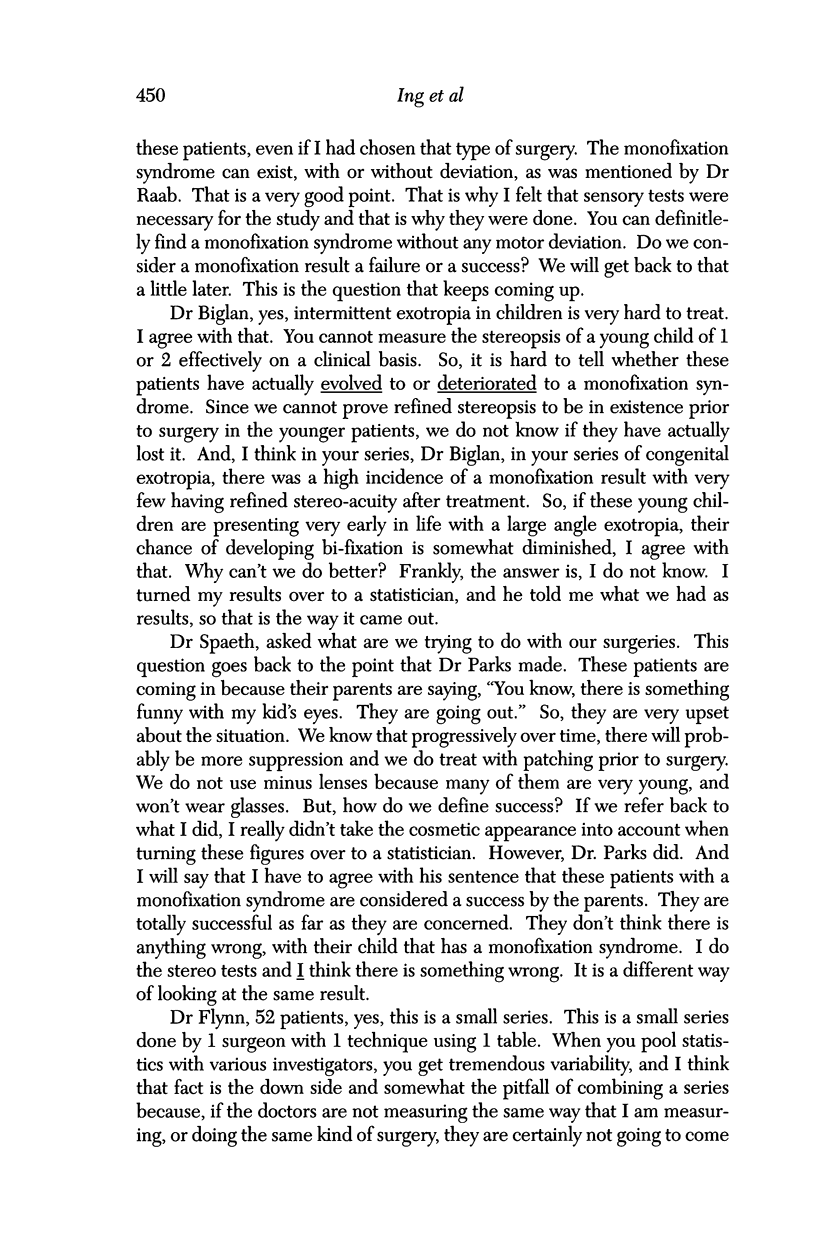
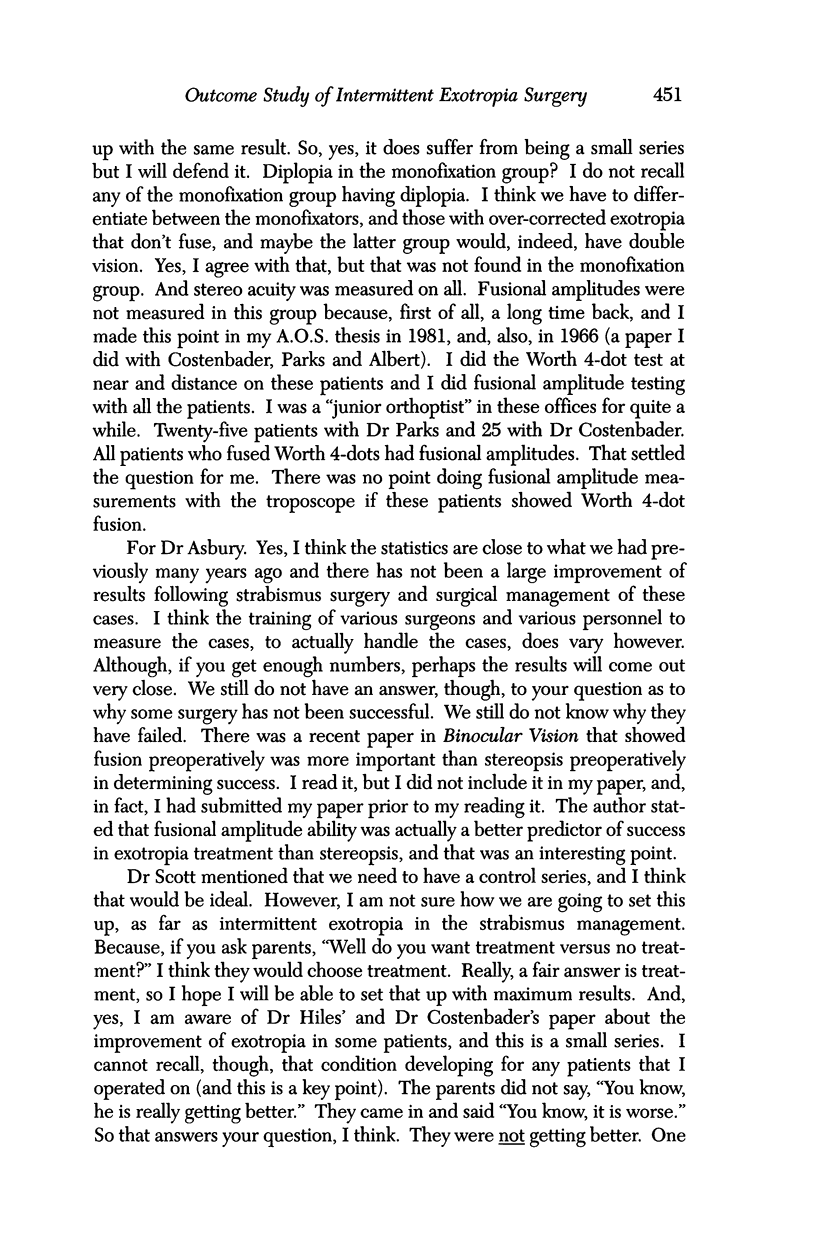
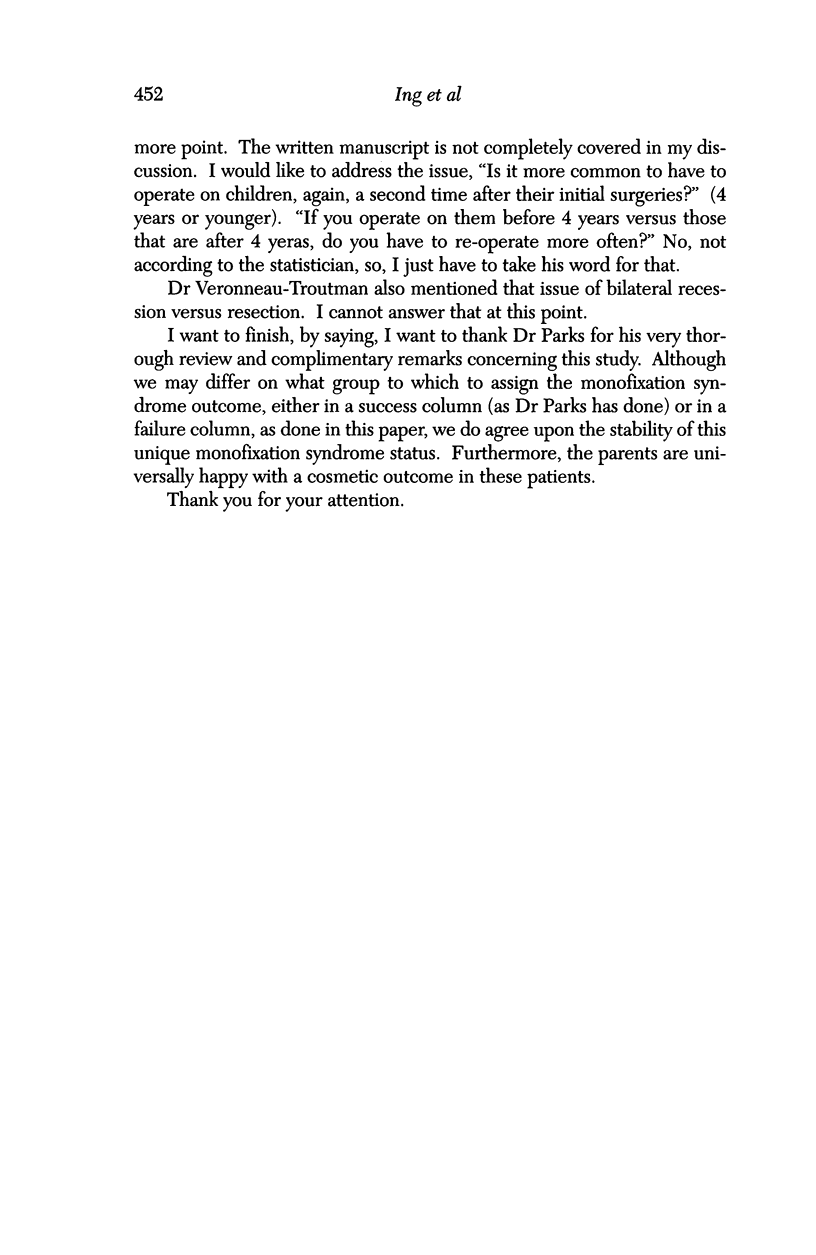
Selected References
These references are in PubMed. This may not be the complete list of references from this article.
- Hardesty H. H., Boynton J. R., Keenan J. P. Treatment of intermittent exotropia. Arch Ophthalmol. 1978 Feb;96(2):268–274. doi: 10.1001/archopht.1978.03910050136006. [DOI] [PubMed] [Google Scholar]
- Pratt-Johnson J. A., Barlow J. M., Tillson G. Early surgery in intermittent exotropia. Am J Ophthalmol. 1977 Nov;84(5):689–694. doi: 10.1016/0002-9394(77)90385-3. [DOI] [PubMed] [Google Scholar]
- Raab E. L., Parks M. M. Recession of the lateral recti. Early and late postoperative alignments. Arch Ophthalmol. 1969 Aug;82(2):203–208. doi: 10.1001/archopht.1969.00990020205010. [DOI] [PubMed] [Google Scholar]
- Richard J. M., Parks M. M. Intermittent exotropia. Surgical results in different age groups. Ophthalmology. 1983 Oct;90(10):1172–1177. [PubMed] [Google Scholar]
- Scott M. H., Richard J. M., Farris B. K. Ankyloblepharon filiforme adnatum associated with infantile glaucoma and iridogoniodysgenesis. J Pediatr Ophthalmol Strabismus. 1994 Mar-Apr;31(2):93–95. doi: 10.3928/0191-3913-19940301-07. [DOI] [PubMed] [Google Scholar]


